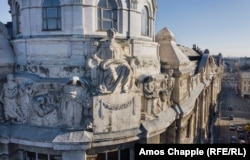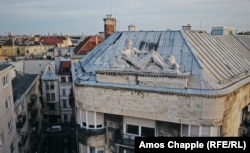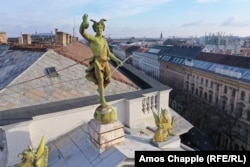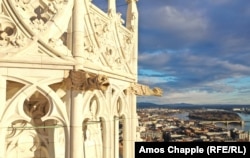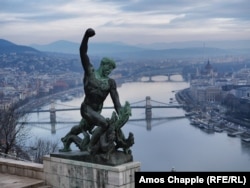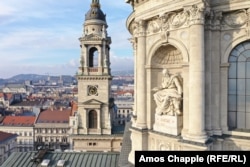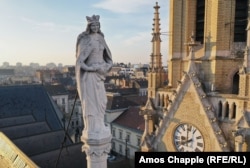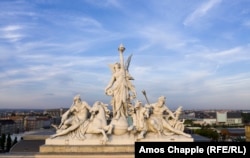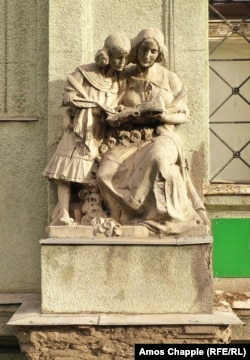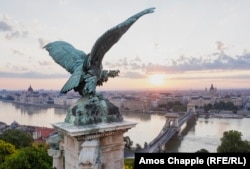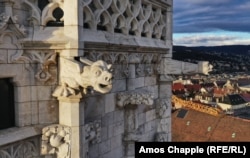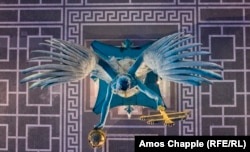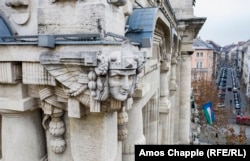These monsters, maidens, and heroes have watched history unfold from high above the streets of the Hungarian capital.
Kossuth was a lawyer and politician who played an instrumental role in the Hungarian Revolution of 1848. The "father of Hungarian democracy" is one of only a few non-Americans honored with a bust inside Washington's Capitol building.
The building was completed in 1913 as the headquarters of a Hungarian bank.
Little is known about the stone carving, but one local expert believes it may have advertised a King Restaurant that once existed in the ancient hilltop neighborhood.
Little is known about the figure except its inauspicious date of completion in 1939. The world war that broke out that year, which devastated much of Budapest, apparently left the sculpture untouched.
The building once boasted a spectacular cupola ringed with giant griffins. After it was heavily damaged during World War II, the cupola was demolished.
The 1947 ensemble initially honored the Soviet soldiers who died fighting their way into Budapest during World War II. After Hungary's 1989 anti-communist revolution, the monument had its inscription changed to commemorate all of those who have died for the country's freedom.
The building was constructed in 1894 as the head office of the New York Life Insurance Company and featured the "most beautiful coffeehouse in the world" on its ground floor. Today, the landmark operates as a luxury hotel.
The rooftop monument captures one of the miracles of the 13th-century saint's life, when she was said to be sneaking bread from the castle to give to the poor. When challenged by her husband, she opened her cloak to reveal roses that had appeared in place of the stolen bread.
The building conceals a spectacular luxury apartment but is infamous for its rundown exterior.
Steam-powered trains ruled the rails when the sculpture was made in 1884.
The 15th-century King Matthias was known as the "Raven King" for the bird depicted on his coat of arms. According to one legend, Matthias became associated with ravens early in life when one of the birds stole his ring and the young royal chased it down "and slew him, retrieving the ring."
Today, the building houses a school belonging to Hungary's Technical Vocational Training Center.
The bridge was inaugurated in 1876 and a year later Hungarian poet Janos Arany penned a verse about a spate of suicides that took place at the new structure.
A local historian wrote that Roland's presence above the building's entrance warns those entering "that in this building regulations designed to protect the citizens must be observed at all times."
The 6.5-meter-tall figure was emplaced in 2003 in honor of the so-called Apparitions of Fatima, when three Portuguese shepherd children claimed to have seen Mary appear before them shining "brighter than the sun" in 1917.
The small cross atop the crown is bent in imitation of the real crown, which is currently kept in the parliament building.
The academy building was erected in 1907 and today houses one of the world's most prestigious musical schools.







